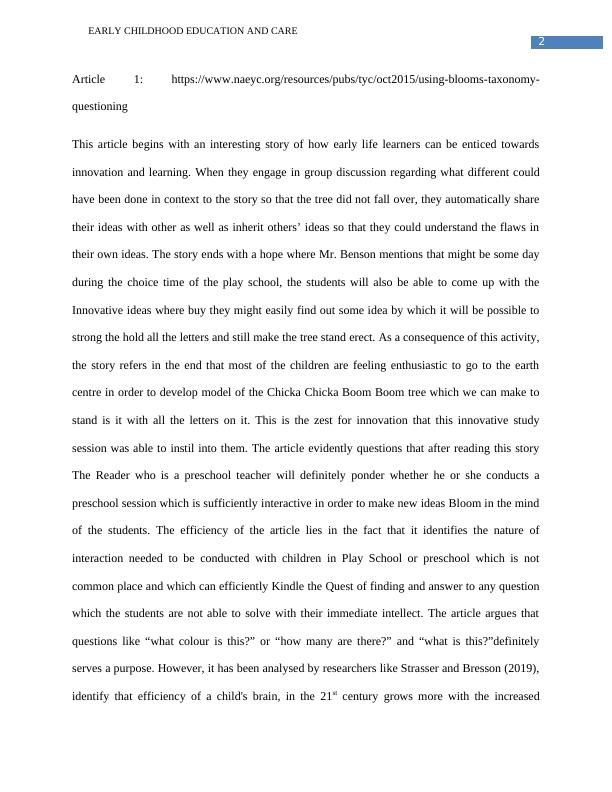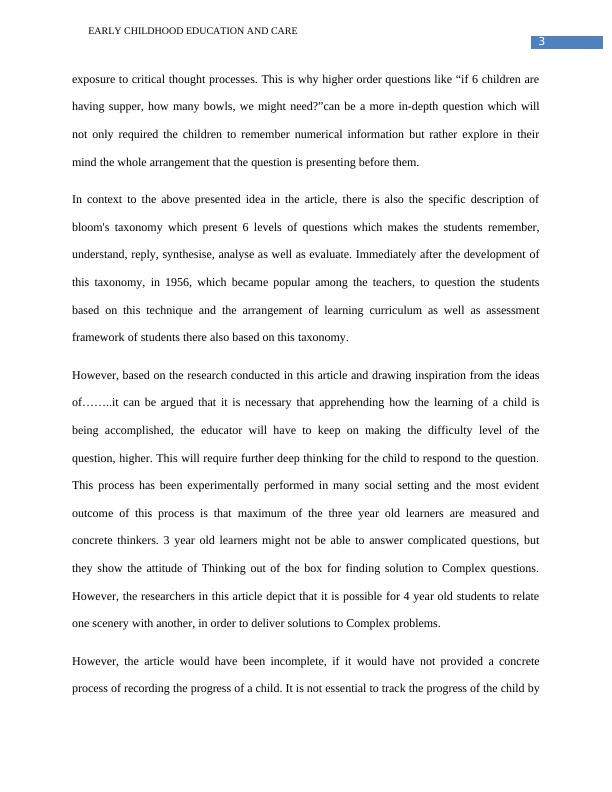Early Childhood Education and Care
8 Pages2268 Words94 Views
Added on 2023-01-04
About This Document
This collection of articles discusses the importance of early childhood education and care in developing critical thinking skills in children. It explores strategies to enhance critical thinking and assess its level of accomplishment. The articles also highlight the utilization of critical thinking skills in higher education.
Early Childhood Education and Care
Added on 2023-01-04
ShareRelated Documents
End of preview
Want to access all the pages? Upload your documents or become a member.
The Application of Blooms Questioning
|4
|854
|307
Strategies for Creating a Safe and Healthy Environment in Early Childhood Education
|10
|2491
|136
Learning Stories of Science and Technology and Mathematics
|11
|3043
|329
ECE 230 Language And Literacy Development In Early Childhood
|12
|3805
|237
Assignment on Early Childhood Care
|13
|2489
|259
Children and Theology - Doc
|6
|1361
|371



